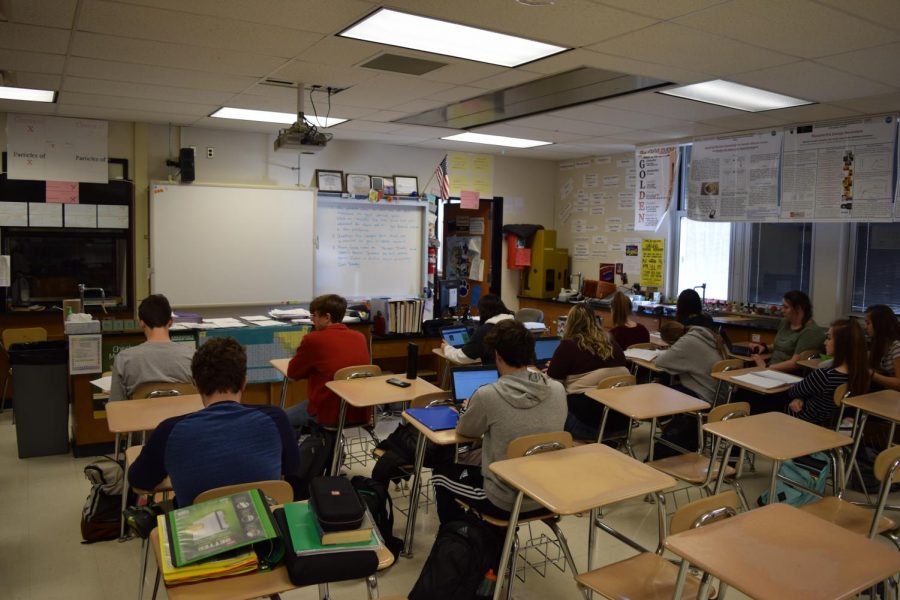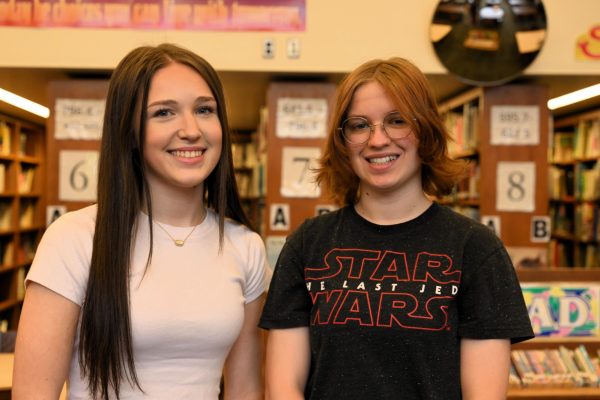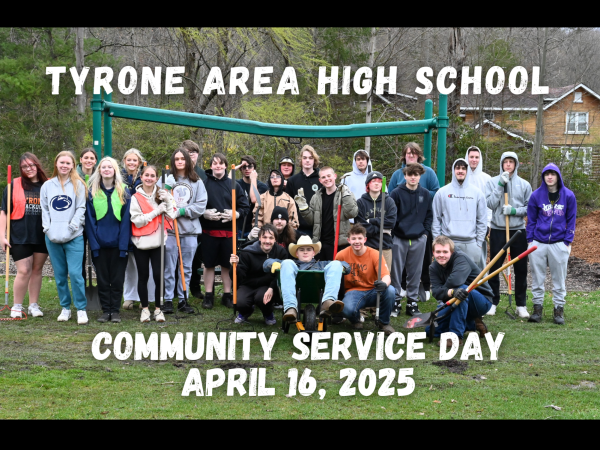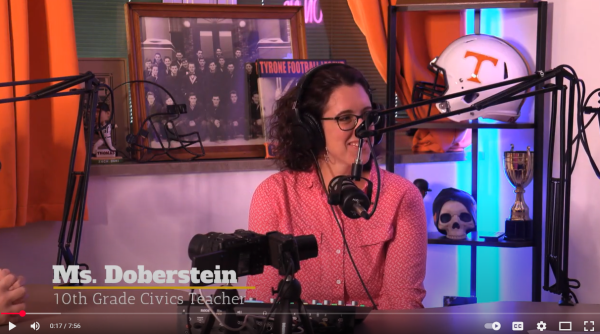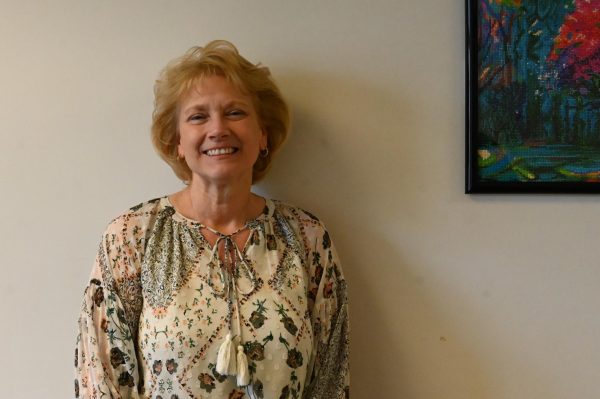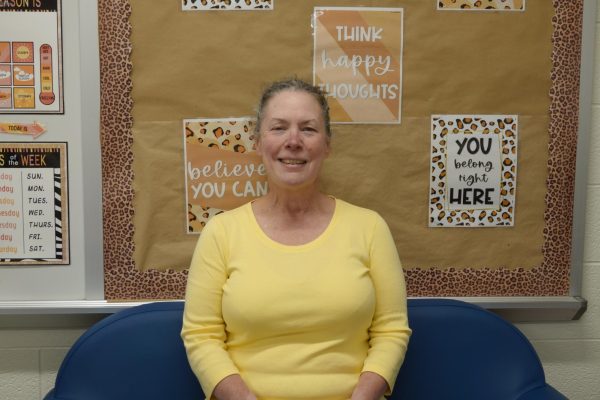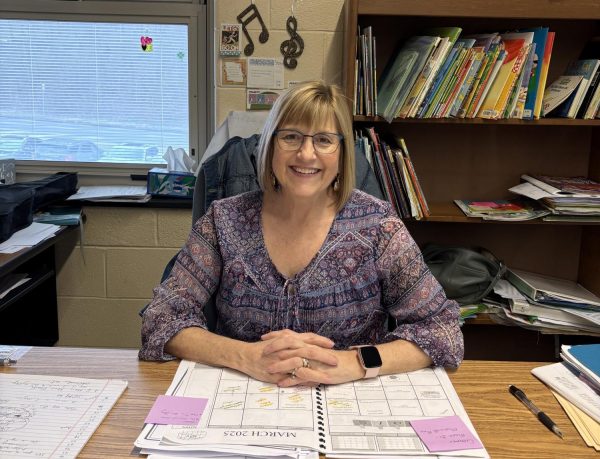National Teacher Shortage Hitting Home
Lack of qualified candidates for teaching jobs are impacting schools across the country, including TAHS
The third period DE Chemistry 2 class focusing on their work. Teacher shortages exist in all content areas, but they are especially concerning in high school math and sciences.
When a ninth-grade English teaching position opened up at Tyrone Area High School last summer, the number of applicants was shockingly low.
“We only had three other teachers interview for Ms. Budny’s position,” said English Department Chair Stephen Everhart, “a couple of decades ago that number would have been four times as high, and that‘s actual interviewees. We would attract twice that many applicants whose grades or scores were not competitive.”
Since 2012, the number of teachers needed in public schools has outpaced the number of available candidates, which continues to decline.
The Economic Policy Institute (EPI) estimated the teacher shortage could reach 200,000 by 2025 in the US, compared to just two years ago where the number stood at 110,000.
While the teacher shortage is a nation-wide issue, schools in our area, including Tyrone Area School District are feeling its effects.
“When I first applied at Tyrone, I think there were something like 75 or more applications for some positions, especially in social studies. I had to go through several rounds of interviews and even teach a class to a group of students to get a job offer. The schools could afford to be very picky about who they hire, but I don’t think that is true anymore,” says Civics teacher Todd Cammarata.
Couple the teacher shortage with the fact that Tyrone’s teachers are near the bottom of the state in teacher pay, its easy to understand why it’s become more and more difficult for Tyrone to find qualified teaching candidates.
“There are about 15-20 applications for an open position now, and half of them aren’t even qualified. And in fields like science and math, there are even less,” said High School Principal Tom Yoder.
And because their are far less certified teachers looking for employment, the ranks of substitute teachers are even lower, which means that schools like Tyrone often have a difficult time finding coverage for teachers out due to illness or training.
The pay, workload, and the negative stigma of the demands of the profession has caused interest in the educational field to drop remarkably among college graduates.
In 1975, more than 22% of college students were majoring in education, making it one of the most popular college majors. Today, the number of students going into education is now less than 10%.
“I think we’re coming onto what might potentially be a crisis. Penn State’s teaching department has dropped by 60%, and when you have those numbers going out into the workplace that means you have fewer staff,” says world geography teacher Cummins McNitt.
A huge factor that deters people from entering education is the pay, especially for public school teachers in Pennsylvania.
Since 2010, the average teacher salary dropped by 4.5 percent nationally when adjusted for inflation, according to the National Education Association. In 2018, the Economic Policy Institute said that teachers are paid 21.4 percent less than those with a similar level of education and experience.
Due to a 2019 pension legislation, new Pennsylvania teachers weekly compensation dropped to 10.0 percent less than that of comparable full-time workers. That legislation deterred even more students from going into the education field.
“When the state devalued teacher pensions last decade, the number of students going into teaching plummeted in step—down over 65%. Some colleges have seen drop-offs in education majors near 80% since then,” said Everhart.
With the setbacks in pensions and benefits for new and current teachers, the teacher shortage is hitting Pennsylvania especially hard.
Another disincentive for students going into education is the negative stigma surrounding teachers. Now more than ever teachers are being scrutinized in the media.
“I think society doesn’t look on the teaching profession as it used to. Some of the public scrutiny leads toward the negative, partially impacted the students available,” said McNitt.
The last issue is the workload. Due to the current teacher shortage teachers have been asked to pick up extra tasks that stretch them even thinner.
This is a problem seen nationwide.
Forbes recently reported that “more teachers are dropping out after their first year than at any time in the last 20 years, while one in three leave after five years.” Many cite low pay, high workload, and stressful work environment as the top reasons for leaving the profession.
Penn State student-teacher Anais Beisecker believes that workload and work conditions to be the main hindrance for college students.
“Everyone knows that schools don’t have good conditions, but teacher burnout is the big issue. You see more and more teachers going into the field, then quitting after two or three years because the burnout is so bad. That’s a huge concern,” said Beisecker.
When teachers are scattered in all different directions this affects the students’ learning. Tyrone teachers are currently facing the same problem.
“The combination of long hours, lower pay, and sometimes a lack of support from students, parents, or administration, lead to teacher burnout. During the school year, I often get to school at 6:30 am to prep for the day, and I am often still at school past 4pm (either helping students or in a meeting),” said veteran Tyrone science teacher Beth Cannastraci.
With less new bodies to fill those positions, current teachers are expected to take up even more duties.
“It’s impacted all of us, every teacher. Districts across the nation are trying to do more with less teachers which means that everybody has to pick up extra responsibilities. Sometimes when staff are pulled in so many directions it means they can’t give as much as they normally give in the classroom experience with their students,” said McNitt.
This means students receive less specialized attention and students who require extra help can’t access needed resources if their teachers are tasked with other responsibilities.
“If you have bigger class sizes with less individualized attention it’s hard if a student isn’t grasping a concept, it’s hard to find extra time to help that student. Learning becomes difficult for students when before it wasn’t hard to assist them,” said student-teacher Anais Beisecker.
This change in the classroom affects how students are learning. When teachers aren’t able to put their full energy into teaching, the students suffer. Without extra time for planning this forces teachers to teach the basics of subjects. This leaves less time for the more interesting parts of the lesson that might excite the students. This also cuts some of the essential courses that students need for extra support.
This can be seen in Tyrone’s halls.
“In the science department, we had an additional part-time chemistry teacher who left the district and was not replaced. We also had another teacher who taught a science course who was reassigned. Any time teachers are not replaced there is additional stress put on the teachers that remain….This year we do not have a biology remediation course for the students who did not score proficient on the biology keystone last year,” said Cannastraci.
This scarcity creates issues for older teachers. Without a new wave of teachers to replace them, teachers looking to retire find themselves in a difficult position.
“When people like me, older teachers, retire, who’s going to fill in their spots?” asks McNitt.
All these factors are creating a possible future crisis for America’s education system. In order to reverse the effects of the teacher shortage, many believe society needs to address the issue as soon as possible.
“I think that education, not only in terms of teaching, but in how we approach education in the classroom, I think it needs to change to catch up with the times and deal with more realistically the need for our students,” said McNitt.
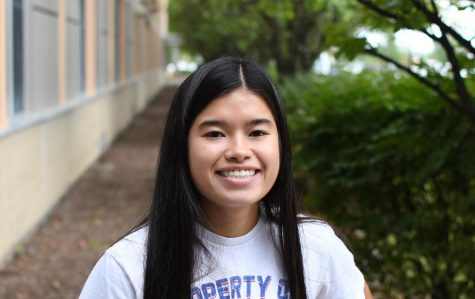
Shalom, I'm Ebonee Rice. I am a senior at the prestigious Tyrone Area High School. This is my first and my last year in Eagle Eye. I am a captain of the...




